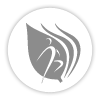Joint pain is also called arthralgia. Joint pain can affect one or more joints and may be caused by many types of injuries or conditions. Rheumatoid arthritis causes stiff and painful joints. Osteoarthritis may involve degeneration of cartilage and growth of bone spurs. Joint pain may also be caused by bursitis-inflammation of the fluid filled sacs that help cushion bones. Physical Therapy can help with joint pain to provide protection tips and exercises to strengthen/stretch muscles around joints.
Archives: Conditions
Holds our conditions and condition-specific data
Joint Dislocation
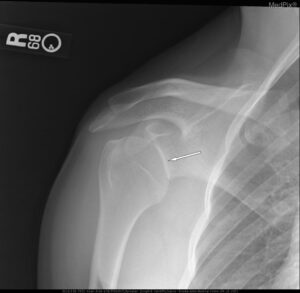 Joint dislocation occurs when a joint separates or dislocates abnormally disrupting the normal alignment of a joint. Joints may also sublux and this occurs when the joint begins to dislocate but has not yet lost contact on two sides of the joint. Dislocations occur commonly in the shoulder and finger joints. Physical Therapy can help identify tight and weakened muscles around the joint and design exercises to help promote balance and teach joint protection strategies and proper posture.
Joint dislocation occurs when a joint separates or dislocates abnormally disrupting the normal alignment of a joint. Joints may also sublux and this occurs when the joint begins to dislocate but has not yet lost contact on two sides of the joint. Dislocations occur commonly in the shoulder and finger joints. Physical Therapy can help identify tight and weakened muscles around the joint and design exercises to help promote balance and teach joint protection strategies and proper posture.
Inflexibility
As we age, flexibility may be reduced if we fail to stay active and/or work on flexibility. Muscles can tighten and range of motion can become limited. This may affect your every day activity as well as your active lifestyle. Everyone can stretch and work on flexibility despite you age, size, or body type. Physical Therapy can help identify your tightness and tailor exercises to increase your flexibility and help you maintain flexibility, prevent injury with exercise, promote circulation and range of motion and relax you.
Heel Spurs
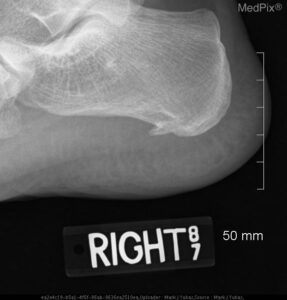 Heel spurs are often associated with plantar fasciitis. A hook of bone forms on the heel bone (calcaneous) and this is known as a heel spur. Upon x-ray, this hook of bone is seen protruding from the bottom of the foot often where the plantar fascia is attached to the heel bone. Physical therapy can help with heel spurs to assess proper gait mechanics, shoes and muscle and flexibility imbalances.
Heel spurs are often associated with plantar fasciitis. A hook of bone forms on the heel bone (calcaneous) and this is known as a heel spur. Upon x-ray, this hook of bone is seen protruding from the bottom of the foot often where the plantar fascia is attached to the heel bone. Physical therapy can help with heel spurs to assess proper gait mechanics, shoes and muscle and flexibility imbalances.
Hand Injuries
Hand injuries can vary from minor cuts and bruises to serious lacerations or broken bones. Injury to underlying structures of the hand has a potential for serious handicap. A good medical evaluation and rehabilitation can reduce this risk. The hand/wrist contains 27 bones and includes arteries, veins, muscles, tendons, ligaments, nerve and cartilage. After a thorough evaluation, a physical therapist will design an individualized treatment program which may include exercises to improve range of motion, strength and flexibility, manual therapy to improve joint and soft tissue mobility, and education in ergonomics and joint protection strategies.
Lordosis
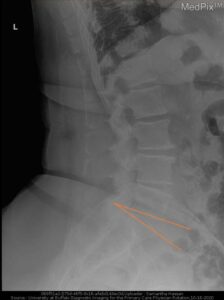 Lordosis is an excessive inward curvature of the spine. There is normally a natural inward curve in the cervical and lumbar spine but an excessive curve (especially in the low back) may lead to swayback. Increased or decreased lordosis (flat back) can affect the spine by decreasing shock absorption which decreases the distribution of mechanical stress. Physical therapy can help through education in proper posture, exercises to strengthen muscles and address other contributing factors.
Lordosis is an excessive inward curvature of the spine. There is normally a natural inward curve in the cervical and lumbar spine but an excessive curve (especially in the low back) may lead to swayback. Increased or decreased lordosis (flat back) can affect the spine by decreasing shock absorption which decreases the distribution of mechanical stress. Physical therapy can help through education in proper posture, exercises to strengthen muscles and address other contributing factors.
Kyphosis
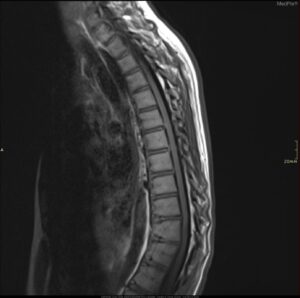 Kyphosis is a forward curvature of the upper spine. Some rounding is normal but kyphosis generally refers to an increased rounding of 40 to 45 degrees or more. This condition is often called hunch back. Kyphosis may be due to degenerative diseases, osteoporosis with compression fractures of the vertebrae, developmental problems or trauma to the spine. This condition can affect all ages, cause few problems in mild cases but also be so severe it can affect your breathing/lungs, nerves, organs, etc. Physical Therapy can help with postural education, strengthening and stretching exercises and ergonomic tips to prevent the condition from worsening.
Kyphosis is a forward curvature of the upper spine. Some rounding is normal but kyphosis generally refers to an increased rounding of 40 to 45 degrees or more. This condition is often called hunch back. Kyphosis may be due to degenerative diseases, osteoporosis with compression fractures of the vertebrae, developmental problems or trauma to the spine. This condition can affect all ages, cause few problems in mild cases but also be so severe it can affect your breathing/lungs, nerves, organs, etc. Physical Therapy can help with postural education, strengthening and stretching exercises and ergonomic tips to prevent the condition from worsening.
Knee Injuries
The knee joint is designed to bend and straighten. The knee may be injured by a direct blow but more commonly twisting or stretching it through a greater range of motion. Types of knee injuries may include ligament tears or sprains, meniscus or cartilage tears, strains of muscles and tendons around the knee joint and inflammation of the bursa of the knee secondary to direct blows or chronic use. Physical Therapy can help with knee injuries to help stretch and strengthen the joint and weakened structures to promote more balance, educate in proper gait and joint protection strategies as well as supervise a more structured rehabilitation regime following surgery to endure maximum range of motion and strength gains to normalize function.
Trauma
Trauma may be physical or psychological. Physical traumas may include serious bodily injury including the removal of a limb. This may include impact or force applied from a blunt object or penetrating the skin or tissues with an object. Physical therapy can help individuals after trauma which may include care and use of a prosthesis if a limb has been removed, exercises to help strengthen weakened and stretch tight muscles, gait instruction if needed, manual therapy to decrease tone in tight muscles or scar mobilization and education in posture, joint protection strategies and ergonomics.
Joint Replacement
Joint pain that is severe and disabling may indicate the need for surgery to replace the old worn out joint. It is often caused by osteoarthritis. Total joint replacements can help patients regain mobility, strength and daily activities but is often used as a last resort when pain medications, weight loss, and exercise is not enough. PT can help patients with total joint replacements rehabilitate and regain mobility, strength and function. Common joint replacements are knee and hip, less common are shoulder, ankles, wrist and elbows.
